Convolution Layers
3 x 32 x 32 image
- unlike fully-connected layer
Convolve the filter with the image
- slide over the image spatially, computing the dot products
- Produces one number each dot product
Filter always extend the full depth of the input volume
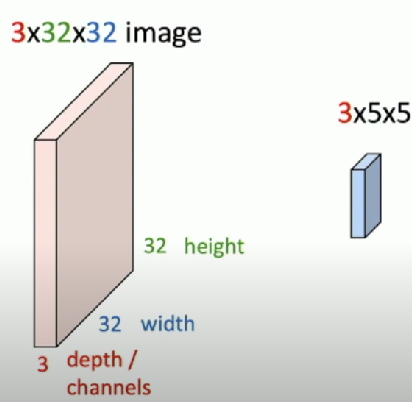
Number of filters is a Hyperparameters
- 6 filters in this case
There is also a bias for each filter
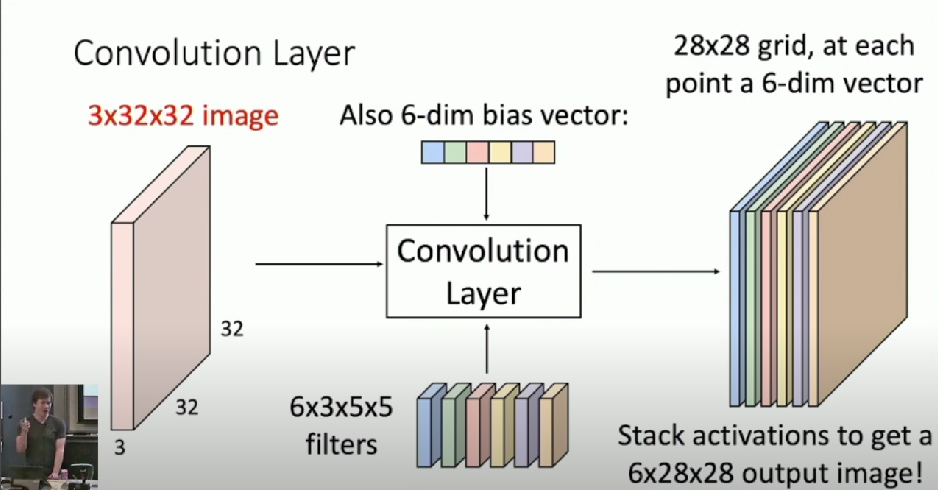
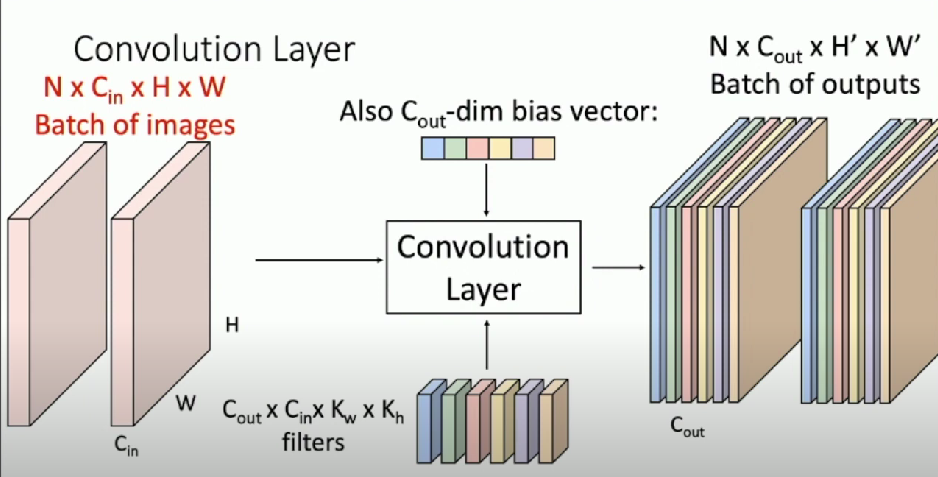
Stacking Convolutions
We get another convolution!
Insert non-linear activation function between convolutional layers
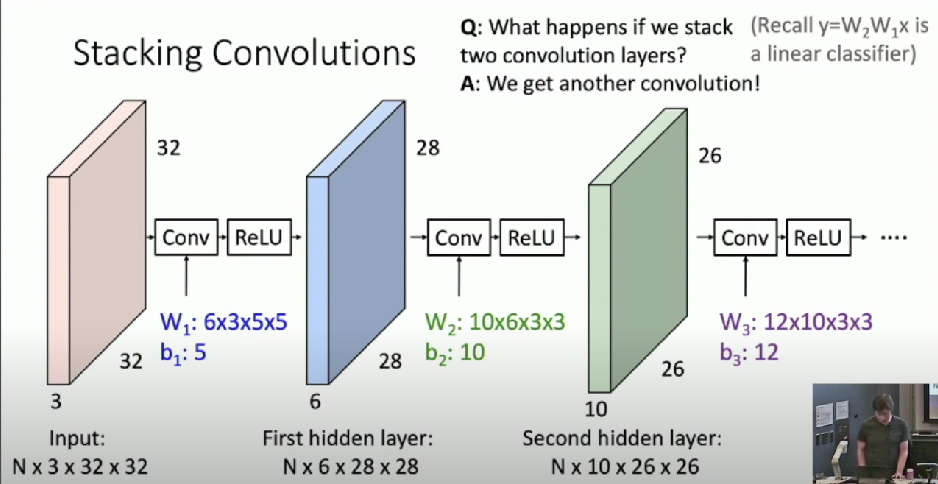
What do convolutional filters learn?
First-layer conv filters: local image templates
- often learns oriented edges, opposing colors
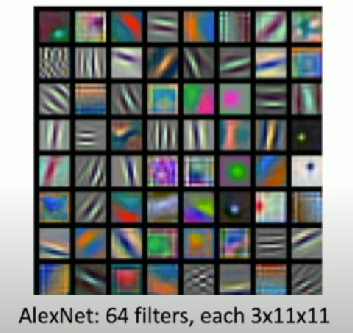
Closer look at spatial dimensions
Input: W
Filter: K
Output: W - K + 1
Problem: Feature amps “shrink” with each layer!
Add zeros around the input
Input: W
Filter: K
Padding: P
Output: W - K + 1 + 2P
Common to set P=(K-1)/2 to make output have same size as input

Receptive Fields
For convolution with kernel size K, each element in the output depends on a K x K receptive field in the input
Each successive convolution adds K - 1 tot he receptive field size
With L layers the receptive field size is 1 + L * (K - 1)

Downsample inside the network
Strided Convolution
Stride is a Hyperparameters
- Use filter on every
strideto calculate dot product - Skip over some
Input: W
Filter: K
Padding: P
Stride: S
Output: (W - K + 2P) / S + 1
Input Volume: 3 x 32 x 32
10 5x5 filters with stride 1, pad 2
Output volume size: 10 x 32 x 32
(32 - 5 + 2 x 2) / 1 + 1 = 32 spatially, so 10 x 32 x 32
Number of learnable parameters: 760
Parameters per filter: 3 x 5 x 5 + 1 (bias) = 76
10 filters, so total is 10 x 76 = 760
Number of multiply-add operations: 768,000
10 x 32 x 32 = 10,240 outputs;
each output is the inner product of two 3 x 5 x 5 tensors (75 elements);
total = 75 x 10240 = 768,000
Hyperparameters
- Kernel size
- Number filters
- Padding
- Stride